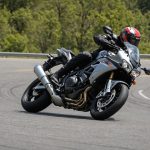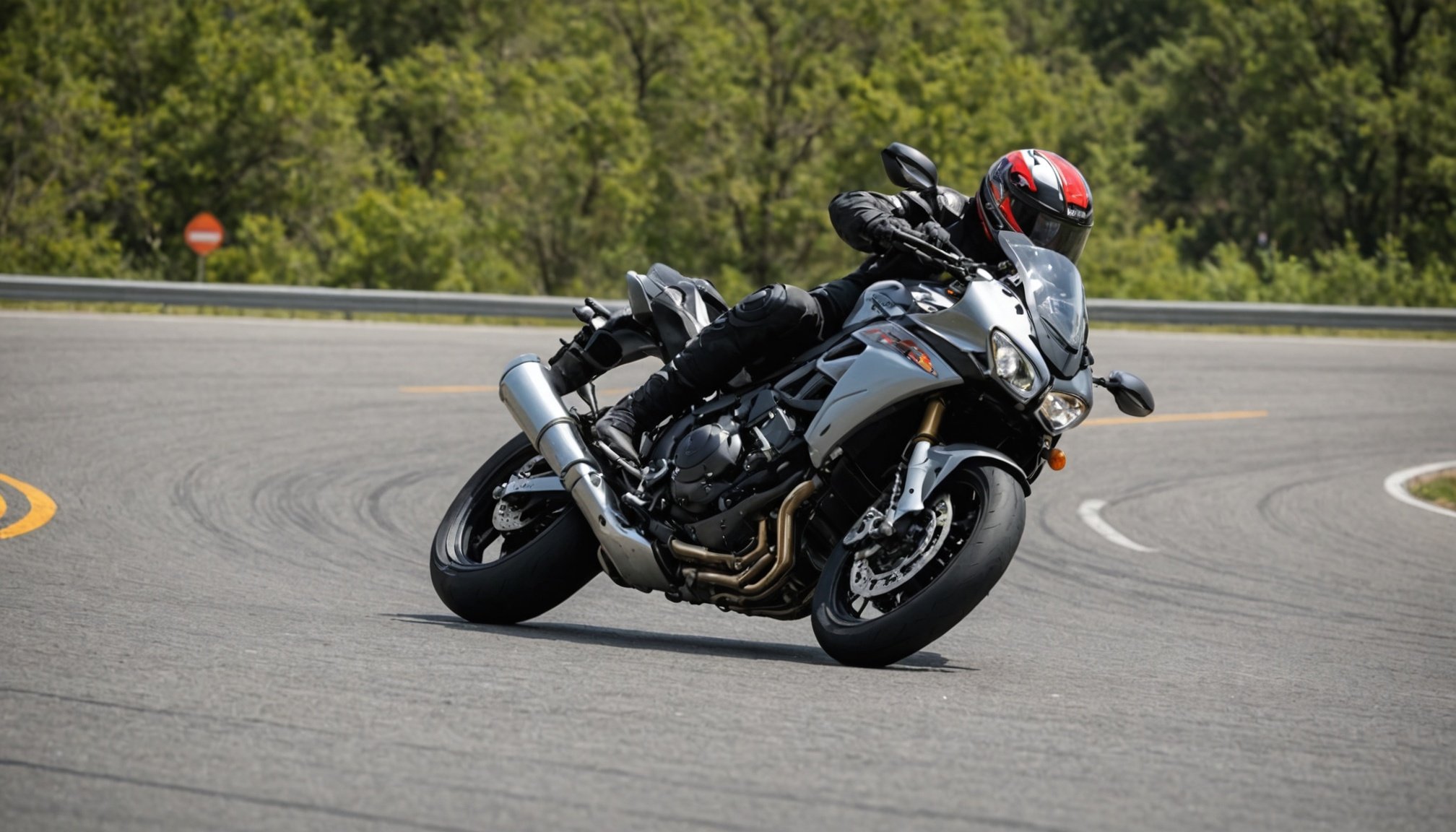Navigating corners gracefully and safely is the hallmark of proficient motorcycle riders. Whether you’re a seasoned enthusiast or a fresh face in the riding community, understanding the nuances of cornering can make all the difference in your riding experience. As you lean into a curve, several dynamics come into play: the speed of your bike, the tilt of your body, and the maintenance of your throttle. This article endeavors to illuminate the best techniques for cornering on a motorcycle safely, ensuring that every ride is as enjoyable as it is secure. Join us on this journey to mastering the art of cornering.
Understanding the Dynamics of a Motorcycle Corner
At the heart of safe motorcycle cornering lies a deep comprehension of the bike’s dynamics. The act of turning is not simply about steering but involves a blend of physics and skill, which, when mastered, transforms a routine ride into an exhilarating experience.
Topic to read : How can you enhance your motorcycle’s visibility to reduce accident risks?
The Nature of a Turn
Before you even approach a turn, it’s crucial to comprehend what a corner entails. A corner is where the road curves, requiring a shift in the rider’s balance and trajectory. Riders must anticipate these changes to maintain control, especially as they increase their speed.
The Physics of Leaning
When cornering, shifting your body weight is essential. Leaning into the turn reduces the centrifugal force that would otherwise push the motorcycle outwards. This technique requires a delicate balance; lean too much, and you risk losing traction, too little, and the bike may veer off its intended path.
This might interest you : How can you improve your motorcycle’s fuel efficiency through simple adjustments?
Adjusting the Throttle
The throttle is your best friend when navigating curves. A steady throttle helps maintain the motorcycle’s momentum, providing good traction and stability. When approaching a turn, gently roll off the throttle to decrease speed, and as you exit, roll back on to accelerate smoothly. This throttle control ensures a seamless ride throughout the corner.
Techniques to Master Cornering Safely
Equipped with an understanding of basic dynamics, let’s delve into specific techniques to enhance your cornering prowess. Each method enhances your ability to handle your motorcycle with confidence and precision.
Look Where You Want to Go
Your will and vision are powerful tools while riding. Always focus your gaze on the path you wish to follow, which helps in naturally guiding the bike through the corner. Keep your eyes up and look through the turn—this approach helps you anticipate road changes and adjust accordingly.
Body Positioning
Your body position on the motorcycle can significantly influence your stability. For better cornering, shift your body weight slightly to the inside of the turn while keeping your upper body relaxed. This movement helps balance the bike and enhances control.
Smooth Braking and Acceleration
Employ smooth, deliberate actions when braking and accelerating. Harsh inputs can upset the motorcycle’s balance. Begin braking before the corner, and as you lean, maintain a constant throttle to keep the bike stable.
Practice and Patience
Good cornering doesn’t happen overnight. It takes time and practice to refine your skills. Start by tackling less challenging curves and gradually advance to more complex ones. Patience and persistence are key in mastering the art of cornering.
Choosing the Right Line in a Corner
Selecting the optimal line through a turn can differentiate between a smooth, controlled ride and an unpredictable one. Understanding the concept of a line helps in maintaining stability and maximizing safety.
The Importance of the Apex
The apex is the point in a corner where the bike is closest to the inside edge of the road. By identifying and aiming for the apex, you can ensure a smooth trajectory through the corner. This approach allows you to lean optimally, reducing unnecessary stress on the bike.
Entry, Apex, and Exit
Every corner can be broken down into three stages: entry, apex, and exit. When entering a turn, position your bike on the outside edge to widen your path. As you approach the apex, gently bring the motorcycle towards the inside. Lastly, exit by returning to the outer part of the lane—this strategy maximizes speed and control.
Reading the Road
Road conditions can significantly impact your line choice. Be mindful of hazards like gravel or wet patches that could affect traction. Adapting your line to accommodate such variables ensures that your ride remains safe and enjoyable.
Common Mistakes and How to Avoid Them
Even seasoned riders may fall prey to certain pitfalls when cornering. Recognizing and avoiding these common mistakes can help you maintain control and ride with confidence.
Overshooting a Corner
Overshooting occurs when entering a corner too fast, leading to an unintended path. To avoid this, always approach curves with a suitable speed, allowing you to adjust as necessary while cornering.
Poor Throttle Control
Inconsistent throttle use can disrupt the motorcycle’s balance. Focus on maintaining a steady throttle through the turn, and avoid abrupt changes that could destabilize the bike.
Incorrect Body Position
Improper lean angles or body positioning can compromise the bike’s ability to corner efficiently. Practice maintaining a relaxed posture with your body slightly inside the corner.
Panic Braking
Sudden braking during a turn can be disastrous. To prevent panic braking, ensure you have adequately reduced your speed before entering the corner and use the throttle smoothly.
Cornering safely on a motorcycle requires practice, awareness, and the right techniques. As passionate riders, mastering corners can elevate your biking experience, transforming a mundane ride into an exhilarating journey. By understanding the dynamics involved, refining your skills, and maintaining a focus on safety, you can approach each corner with confidence and grace. Every ride is an opportunity to learn and improve—embrace it and let the road be your guide.











